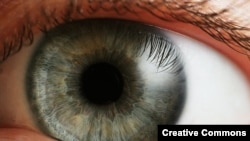Scientists have taken a major step toward potentially reversing a common form of blindness.
Researchers at the University College London (UCL) successfully transplanted light-sensitive photoreceptor cells from a synthetic retina that was grown from embryonic stem cells into night-blind mice. Photoreceptor cells are light sensitive nerve cells at the back of the eye. Many forms of blindness -- including age-related macular degeneration, retinitis pigmentosa and diabetes-related blindness -- are caused by the loss of these cells.
The transplanted cells appeared to develop normally into the mice’s retina and formed nerve connections needed to communicate visual information to the brain, the researchers said.
In the future, the process could provide an unlimited supply of healthy photoreceptor cells for transplantation into human retinas.
“Over recent years scientists have become pretty good at working with stem cells and coaxing them to develop into different types of adult cells and tissues,” said Professor Robin Ali of UCL. “But until recently, the complex structure of the retina has proved difficult to reproduce in the lab. This is probably because the type of cell culture we were using was not able to recreate the developmental process that would happen in a normal embryo.”
The researchers grew the cells using a 3D culture method developed in Japan. Throughout the process, the cells were compared to cells developed normally to ensure they were biologically equivalent. Scientists then transplanted about 200,000 of the cells and injected them into the retina of night-blind mice.
Three weeks after the procedure, the injected cells began to look like normal, mature photoreceptor cells. Six weeks after the procedure, the cells were still there, and researchers noticed nerve connections with the existing retinal circuitry.
“The new 3D technique more closely mimics normal development, which means we are able to pick out and purify the cells at precisely the right stage to ensure successful transplantation,” said Ali. “The next step will be to refine this technique using human cells to enable us to start clinical trials.”
Researchers at the University College London (UCL) successfully transplanted light-sensitive photoreceptor cells from a synthetic retina that was grown from embryonic stem cells into night-blind mice. Photoreceptor cells are light sensitive nerve cells at the back of the eye. Many forms of blindness -- including age-related macular degeneration, retinitis pigmentosa and diabetes-related blindness -- are caused by the loss of these cells.
The transplanted cells appeared to develop normally into the mice’s retina and formed nerve connections needed to communicate visual information to the brain, the researchers said.
In the future, the process could provide an unlimited supply of healthy photoreceptor cells for transplantation into human retinas.
“Over recent years scientists have become pretty good at working with stem cells and coaxing them to develop into different types of adult cells and tissues,” said Professor Robin Ali of UCL. “But until recently, the complex structure of the retina has proved difficult to reproduce in the lab. This is probably because the type of cell culture we were using was not able to recreate the developmental process that would happen in a normal embryo.”
The researchers grew the cells using a 3D culture method developed in Japan. Throughout the process, the cells were compared to cells developed normally to ensure they were biologically equivalent. Scientists then transplanted about 200,000 of the cells and injected them into the retina of night-blind mice.
Three weeks after the procedure, the injected cells began to look like normal, mature photoreceptor cells. Six weeks after the procedure, the cells were still there, and researchers noticed nerve connections with the existing retinal circuitry.
“The new 3D technique more closely mimics normal development, which means we are able to pick out and purify the cells at precisely the right stage to ensure successful transplantation,” said Ali. “The next step will be to refine this technique using human cells to enable us to start clinical trials.”










